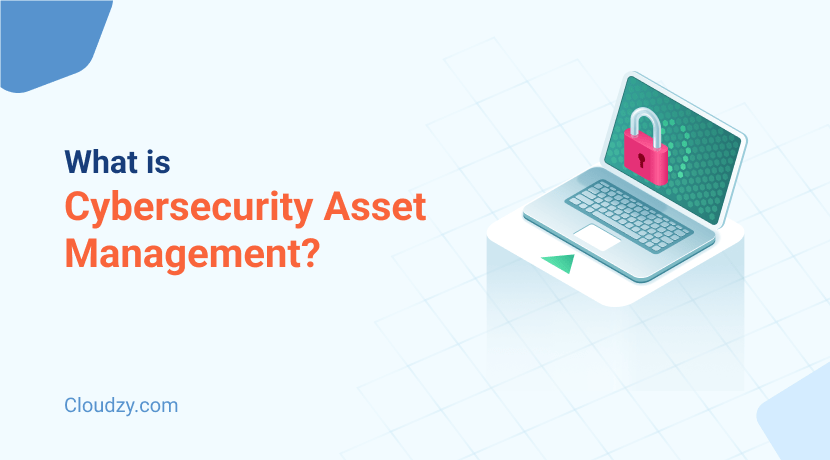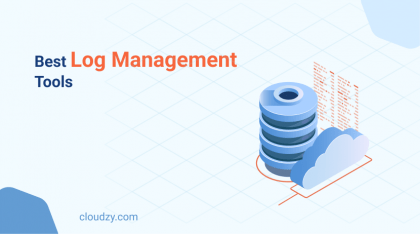Imagine an organization with a vast array of digital assets like servers, databases, applications, and network devices that are spread across different locations. This organization needs to keep track of these assets, secure them, and manage their lifecycle. But since there are several assets, a lack of visibility and control can lead to vulnerabilities, non-compliance with regulations, and inefficiencies. The most efficient solution for this issue is Cybersecurity Asset Management (CSAM). CSAM provides a structured approach to identifying, managing, and securing an organization’s digital assets. If you want to know how CSAM streamlines security measures and protects the assets of an organization, follow along as we discuss how CSAM works, its importance, and its benefits.
What Is CSAM?
Cybersecurity Asset Management (CSAM) is the systematic process of identifying, managing, and securing an organization’s digital assets. An asset in cyber security can include servers and workstations, software applications, data repositories, and network devices. And they come in any form; physical, virtual, or even cloud-based.
CSAM makes sure that every asset within your organization’s digital infrastructure is properly configured, and protected against potential threats. To understand the CSAM meaning you need to recognize the vital role that thorough asset management plays in maintaining a robust cybersecurity posture. CSAM determines what each asset does and where it stands. It also identifies any cybersecurity issues and finds a way to address the problem.
Why Does Cybersecurity Asset Management Matter?
Imagine you don’t really know what your organization owns. Without clear visibility into what assets exist and their current state, how can you secure them? If you carelessly miss an asset, it can become a very easy entry point for cyber attackers. So, the first importance of cyber security asset management is that it gives you a comprehensive inventory of all digital assets. This way, you don’t miss anything and every asset is secure.
The next significance of CSAM is that effective cyber asset management supports compliance with various regulatory standards and industry best practices. Regulations such as GDPR, HIPAA, and PCI-DSS mandate rigorous controls over digital assets. If your organization fails to comply with these regulations, you may be fined or face other legal consequences.
The third point of importance is simple, yet so crucial. Security asset management contributes to overall risk management. If you constantly monitor your assets and their security status, you can identify all the potential risks before they turn into serious incidents. With this proactive approach, you can reduce the likelihood of costly security breaches.
In essence, cybersecurity asset management is a foundational element of a robust cybersecurity strategy.
How Does Cybersecurity Asset Management Work?
Cybersecurity Asset Management (CSAM) operates through a structured and continuous process that has several activities. Here’s a detailed look at how it works:
1. Asset Identification and Inventory
The first step in CSAM is to identify and catalog all digital assets within the organization. This includes hardware (servers, workstations, network devices), software applications, and data repositories. CSAM employs specialized tools and automated systems to discover and inventory these assets. These tools provide real-time visibility into the assets of an organization and make sure that nothing is overlooked.
2. Asset Classification and Prioritization
After the identification of assets, they should be classified based on their importance, sensitivity, and criticality to business operations. This way you can prioritize security efforts and allocate resources effectively. Critical assets that handle sensitive information or are essential for business continuity get higher priority in terms of protection and monitoring.
3. Risk Assessment and Vulnerability Management
CSAM evaluates the condition of each asset for potential risks and vulnerabilities. For this purpose, it checks the asset’s configuration, patch status, and exposure to potential threats. Regular vulnerability scans and assessments mean you can identify weaknesses that could be exploited by attackers much faster.
4. Continuous Monitoring and Maintenance
CSAM constantly monitors assets to make sure they remain secure and compliant with policies and regulations. So, it tracks changes in asset configurations and monitors for unusual activity. The security and integrity of an organization’s assets depend on regular maintenance, such as patch management and software updates.
5. Incident Response and Management
In the event of a security incident, having a well-documented inventory of assets helps in quick response and mitigation. In such a situation, you can prioritize your response efforts by knowing exactly what assets are affected and their importance. Incident management processes are integrated into CSAM to make sure a coordinated and effective response to security threats.
6. Documentation and Reporting
Comprehensive documentation and reporting are important parts of CSAM. This includes maintaining detailed records of all assets, their security status, and any incidents or changes. Regular reports provide insights into the asset management program’s effectiveness and help in demonstrating compliance with regulatory requirements.
Through these processes, cybersecurity asset management makes sure that an organization’s digital assets are not only accounted for but also protected and optimized for security and operational efficiency.
What Advantages Does Cybersecurity Asset Management Bring?
Implementing Cybersecurity Asset Management offers numerous advantages that enhance both the security and efficiency of an organization. Here are some of the key benefits:
Enhanced Security and Risk Management
- Proactive Threat Identification: Maintaining a comprehensive inventory of all digital assets and continuously monitoring their security status allows you to identify and address potential threats before they turn into serious incidents.
- Reduced Attack Surface: Effective cyber asset management helps minimize the attack surface by making sure that all assets are properly configured and secured. This reduces the attackers’ chance of exploiting the vulnerabilities.
Improved Compliance and Regulatory Adherence
- Regulatory Compliance: Many industries are subject to rigid regulations that mandate strict controls over digital assets. CSAM helps organizations meet these regulatory requirements because it makes sure that all assets are properly managed and documented.
- Audit Readiness: If you have well-maintained records and reports, you can easily demonstrate compliance during audits. This reduces the risk of non-compliance penalties and enhances the reputation of your organization.
Operational Efficiency and Cost Savings
- Resource Optimization: By having a clear view of all assets, you can optimize resource allocation and avoid redundancy. So, you can use your IT resources better and reduce unnecessary costs.
- Streamlined Processes: CSAM enables the automation of asset management tasks such as inventory tracking, vulnerability scanning, and patch management. This streamlining of processes saves time and reduces the administrative burden on IT staff.
Enhanced Incident Response
- Quick Incident Resolution: In the event of a security incident, you need a detailed inventory of assets so you can quickly identify affected systems and prioritize response efforts. This speeds up the incident resolution and minimizes damage.
- Coordinated Response Efforts: Well-documented asset management practices make sure that all stakeholders have the necessary information to respond effectively to security incidents. This coordination improves the overall incident response capability.
Strategic Decision-Making
- Informed Decision-Making: With accurate and up-to-date information about digital assets, organizations can make more informed decisions about security investments, resource allocation, and risk management strategies.
- Long-Term Planning: CSAM provides valuable insights that support long-term planning and strategic initiatives. Organizations can identify trends, anticipate future needs, and plan accordingly to enhance their security posture.
In summary, cybersecurity asset management brings a multitude of advantages that not only enhance security but also improve operational efficiency, ensure compliance, and support strategic decision-making. By adopting CSAM, organizations can better protect their digital assets, reduce risks, and achieve a more resilient and efficient IT environment.
Conclusion
Cybersecurity Asset Management is important for safeguarding an organization’s digital assets. By identifying, managing, and securing these assets, CSAM mitigates risks and problems.
In this guide, we reviewed how Implementing CSAM can change asset management by offering numerous benefits, including improved security, regulatory adherence, and streamlined processes. It provides a proactive approach to asset management and allows organizations to protect their critical assets effectively.
FAQ
What is the difference between IT asset management and cybersecurity asset management?
IT asset management focuses on tracking and managing the lifecycle of IT assets, including procurement, deployment, and retirement. Cybersecurity asset management, on the other hand, specifically targets identifying, securing, and monitoring digital assets to protect them from cyber threats.
What is asset protection in cyber security?
Asset protection in cybersecurity involves implementing measures to safeguard digital assets from unauthorized access, attacks, and data breaches. This includes deploying firewalls, encryption, access controls, and regular security assessments.
What are key assets in cyber security?
Key assets in cybersecurity include servers, workstations, network devices, software applications, data repositories, and any other digital resources that are critical to business operations. These assets require rigid security measures to protect against potential cyber threats.




